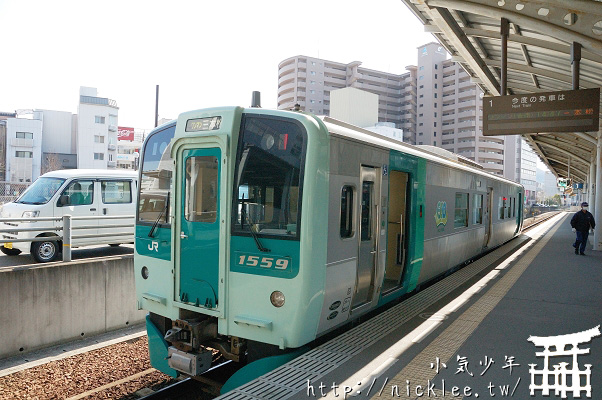Japan has an extensive public transportation system, but the country is vast.
Many remote tourist spots are not accessible by public transport, requiring expensive taxis or private hires, or you can rent a car and drive yourself.
Fortunately, Japan’s driving environment is very friendly to beginners, so even those who have never experienced right-hand driving can quickly get the hang of it.
This Japan Car Rental Guide is for those who have never rented or driven a car in Japan.
I will cover preparations before heading to Japan, introduce suitable car rental websites, explain Japan’s car rental system and insurance, and finally share my car rental experience.
Lastly, I will share my years of car rental experience and driving tips in Japan, hoping everyone has a safe and smooth trip.

Preparing for Car Rental in Japan
1.Applying for a Japanese Translation of Your License
You can apply for a Japanese translation in Taiwan or Japan,
but it’s cheaper to apply in Taiwan, costing NT$100 per copy; in Japan, it costs ¥3000 per copy.
■ In Taiwan
Bring your original driver’s license and ID card to any national highway supervision office to apply, with a fee of NT$100 per copy.
The validity of the Japanese translation is tied to the validity of your driver’s license, but Taiwanese licenses now have no expiration date.
So, as long as it’s valid within one year of entering Japan, if it exceeds one year, you need to convert it to a Japanese license.
Below is a picture of my Japanese translation.
If your license is old, it’s recommended to renew your license before applying for the “Japanese Translation”

■ In Japan
After arriving in Japan, you can apply with your passport and Taiwanese driver’s license at the following designated locations, with a fee of ¥3000 per copy.
However, as reported by netizens in 2022, the application process is now very slow, taking two weeks at JAF and five days at the consulate, so if you didn’t bring it, you might as well abandon the trip.
a. Taipei Economic and Cultural Representative Office in Japan, Yokohama Branch, Naha Branch.
b. Taipei Economic and Cultural Office in Osaka, Fukuoka Branch.
c. Japan Automobile Federation (JAF) offices in various prefectures.
■ How long is the Japanese translation valid?
The answer is: indefinitely! As long as your driver’s license information hasn’t changed, the Japanese translation remains valid!
According to the Japan-Taiwan Exchange Association, “As long as the information on the driver’s license has not changed, the Japanese translation can continue to be considered valid, and there is no need to reapply for a Japanese translation each time you enter Japan.”
2. Finding Suitable Car Rental Websites
Usually, renting a car on-site is more expensive than booking in advance!
So, it is recommended to use comparison websites to check approximate prices before you set off. If you find the prices acceptable, then proceed with the car rental.
You can check the following websites to find affordable options and then make a reservation.
■ ToCoo! Japan Car Rental Comparison
■ Tabirai Japan Car Rental Comparison Website
3. Essential Items for Car Rental
Passport, Taiwanese driver’s license, and Japanese translation—all are indispensable.
If some companies are lax in their checks and allow tourists to rent cars, they will be held accountable if something goes wrong.
So, before you fly abroad, make sure to keep your driver’s license, Japanese translation, and passport together!
4. Understanding Car Rental Company Policies
In Japan, rental cars are categorized into smoking and non-smoking cars, so you cannot rent a non-smoking car and then smoke in it.
Additionally, some non-essential items may incur different charges depending on the company,
such as child seats, navigation systems, and ETC, etc.
(Usually, the cheaper rental companies do not provide these items, and you will need to rent them separately if you need them.)
5. Insurance Recommendations. What insurance should you definitely get when driving in Japan?
When renting a car, pay attention because these details may not be listed on the website, but the rental company will inform you during the actual rental process.
Generally, car rentals come with basic coverage (Collision Damage Waiver), but that is just the most basic insurance.

■ What is a Collision Damage Waiver (CDW)?
In the event of an accident, the driver needs to pay a deductible. With CDW, you don’t have to pay the deductible separately (police report required).
This insurance is not mandatory, but it is recommended to add it.
Cost: 1,100 yen~2,200 yen per day
■ What is NOC (or ECO)?
It stands for Non-Operation Charge. If an accident occurs due to our fault,
and the rental car needs repairs, causing it to be unavailable for rental during that period,
the rental company can claim compensation for the business loss, and this cost is not covered by insurance.
Therefore, to minimize losses, it is recommended to add this insurance as well.
For example:
If you rent a car from Company A and the vehicle is damaged, the costs you need to bear are as follows:
1. If the vehicle cannot be driven back to the service point, you need to compensate up to 50,000 yen.
2. If the vehicle can be driven back to the service point, you need to compensate up to 20,000 yen.
NOC is not mandatory, but it is recommended to add it as a precaution.
Cost: 440 yen~1,100 yen per day
■ What is Peace of Mind Coverage?
If your car encounters an accident outside, requiring emergency fuel delivery, battery jump-start, water refill, tire change, etc. (towing service depends on the policy), some rental companies provide these services for free, while most require you to purchase this service separately.
Unless you can repair the car yourself and believe you are lucky enough not to encounter these unfortunate events, it is recommended to purchase this coverage. After all, in a foreign place, it is better to have insurance.
The content provided by each company varies; some offer towing services, while others do not. The costs also differ.
Cost: 440 yen~660 yen per day
These are the possible insurance options provided by various rental companies.
Therefore, when I rent a car, I must ensure it is fully insured. The entire rental fee is “rent + CDW + ECO + peace of mind”.
Moreover, the fees and regulations of each car rental company are different. Before paying for the rental car, please be sure to confirm with the car rental company in advance.


Renting a Car in Japan
1. Explanation and Fees
Upon arriving at the rental company, please submit your passport, driver’s license, and Japanese translation for photocopying.
Then, the staff will generally explain the rules and the insurance options mentioned above, such as Peace of Mind Coverage and NOC.
Once everything is confirmed, you will be informed about the payment. Then, you will receive a rental certificate.
Keep this document during the rental period, as it may be needed during inspections or other situations.

You will also receive a receipt.
This is the cost of my 7-day, 6-night car rental in Hokkaido this summer, averaging 5,886 yen per day.

2. Car Pickup
During the handover, the staff will first walk you around the car to check for any exterior or interior damage.
They will record any existing damage on a handover record sheet, which will be placed in the car.
The sheet includes simple records of the car’s condition, such as the mileage from the previous rental.
Like in the picture below, where a scratch was noted. Be sure to take photos or videos to avoid being held responsible later.

Car Handover Record Sheet
(The car had only 2022 kilometers before the handover)

Automobile Inspection Certificate, similar to our vehicle registration, will also be placed in the car.

3. Renting an ETC Card
When renting an ETC, some shops will hand you the ETC card to insert yourself, while others will have staff insert it for you.
The ETC card looks like this. When returning the car, you must return the ETC card along with the keys.

Some ETC machines are located under the front windshield, while others are near the steering wheel, close to the car door.

Driving on the Road
1. Before Driving, Understand How to Use the Car
Although the staff will explain some basic functions during handover, including whether the car uses gasoline or diesel, I recommend paying attention to the following:
a. Is the fuel tank on the left or right side?
b. Where is the handbrake? Is it a hand-pull, foot-push, or electronic brake? Japanese cars typically have one of these three types, so make sure to understand it.
c. Adjusting the side and rearview mirrors.
Driver’s Seat

2. Using Navigation Equipment
In Japan, there’s a rule that you cannot set the navigation while the car is moving.
Therefore, to use it, the car must be completely stationary (no need to turn off the engine).
Additionally, since there are many navigation brands, I won’t provide a tutorial. If you can’t use it, switch to Google Maps.
3. Driving
Given Japan’s vast land, traveling between two points often means covering over 100 kilometers.
However, the speed limit is usually only 40-50 km/h (the legal limit is 60 km/h in unmarked areas).
So, it’s easy to accidentally “speed”….
Even on the highway, I was driving at 100 km/h and still got overtaken… XD
So, please drive carefully!!
Also, there are many wild animals in rural Japan.
They might suddenly cross the road, so be cautious to avoid hitting them!!
4. Toll Road Fees (Highway Tolls)
When using toll roads, you usually take a ticket when entering the ramp and pay when exiting.
If you rented an ETC from the car rental company, you can use the ETC lanes on the highway.
If not, you have to use the regular lanes.
If you don’t understand Japanese, renting an ETC can save you the trouble of communicating with toll booth staff.
Note that when passing through an ETC lane, you must reduce your speed to below 20 km/h to pass!
Currently, Japan’s Tohoku and Hokkaido regions offer a JEP (Japan Expressway Pass) for foreigners.
With this pass, you only pay the pass fee regardless of the toll amount.
Besides the nationwide JEP, there are also passes for regions like Tohoku, Hokkaido, and Kyushu.

5. Refueling
Refueling in Japan is easy, with both self-service and full-service options.
Self-service is usually cheaper.
On my trip, the price difference between the most expensive (full-service) and the cheapest (self-service) was 10 yen per liter…
Gasoline is cheaper in big cities and more expensive in rural areas!
Japanese fuel types mainly include: レギュラ- (regular gasoline), ハイオク (premium gasoline), and 軽油 (diesel).
Usually, regular gasoline is sufficient.

There are various payment methods, and most stations have attendants to assist, so you don’t need to get out of the car.
For self-service, there are usually instructions on the pump, so just follow the pictures.
However, not all gas stations accept credit cards.
So, always have cash on hand in case you can’t use your credit card.
In March 2019, I encountered a situation in Beppu, Kyushu, where I couldn’t use my credit card at a self-service station.
I tried Visa, MasterCard, and the top two Taiwanese bank cards, but none worked.
I didn’t bother trying JCB after that… XD
For example:
1. Discharge static electricity to avoid sparks (place your hand on the yellow handprint in the picture).
2. Choose your payment method.
3. Insert cash or credit card (depending on your payment method).
4. Select the fuel type or pick up the nozzle.
5. Refuel until the nozzle automatically stops.
6. Take your receipt and change.

For full-service refueling, if you want to fill up the tank,
please tell the staff “Fu-Ru” or “MA-N TAN” (pronounced: Man Dan, not the English “man”).
This is the receipt for self-service refueling.

6. Returning the Car
Before returning the car, make sure to refuel at the designated gas station!!
Finally, when we return to the car rental location, the staff will inspect the car again, check the mileage, exterior, and fuel level.
Many rental companies require us to provide the refueling receipt for verification.
If you rented an ETC card, return it to the rental company when you return the car,
The rental company will provide the ETC usage record, and you can pay the highway toll fees to the rental company at that time!

Once the car is safely returned without any damage or accidents~

Driving Experience
1. Below is an experience from a 7-day, 6-night car rental in 2012, with a total driving distance of 1521.2 kilometers, highway toll fees were ¥300, fuel cost was ¥15,853, consuming 118.73 liters of fuel (average fuel consumption 12.81 km/L)
Additionally, be sure to keep the refueling receipt, as you will need to provide it to the rental company when returning the car.

Some highways in Hokkaido require tolls, while others do not.
If you accidentally enter a toll highway, don’t panic, just continue driving and exit at the next interchange.
Highways in Japan charge tolls based on mileage, with separate lanes for general tolls and ETC lanes.
For cars without ETC (or without an inserted card), use the general lane, take a ticket when entering, and insert the ticket and pay when exiting.
Highway toll receipt

2. It is recommended to rent an ETC card, which usually costs only 300 yen~400 yen. It saves the hassle of taking tickets and paying tolls at gates.
In Japan, using ETC on highways at night and on holidays offers discounts.
In my experience, the discounts easily exceed 300 yen, so I recommend renting one.
Finally, you can pay the highway toll fees when returning the car, and you can use a credit card!
3. If an accident occurs during the rental period, the rental company may terminate the service according to the contract.
Therefore, drive carefully… If you encounter an accident, be sure to report it to the police.
4. Driving on snowy roads is different from driving on flat roads. If you have no experience driving in snow, do not attempt it lightly.
Let me remind you that it will continue to snow in Hokkaido from mid-November to April. Driving in snow in winter is difficult to control the direction and parking. Those who have no snow driving experience should not try it easily.
Before driving, please read this article written by Hokkaido Daishu:
Hokkaido’s unique traffic characteristics
The above is my personal driving travel experience.
Other regions may have different situations, so please adapt to the local conditions.
Additionally, for more information on driving in Hokkaido, you can download the Complete Guide to Driving in Hokkaido for reading.
『Original Source:https://nicklee.tw/1286/』





